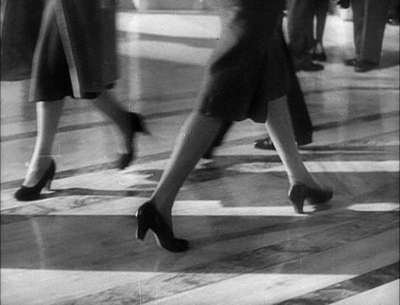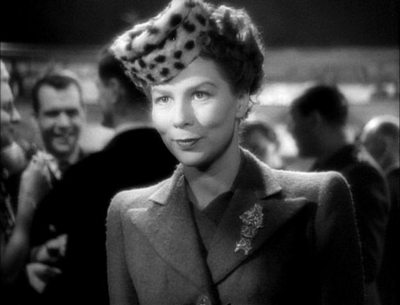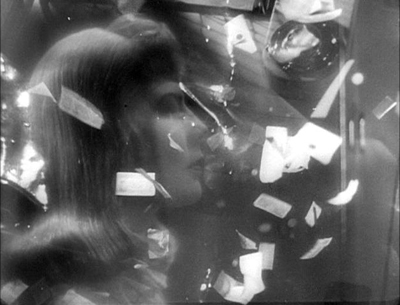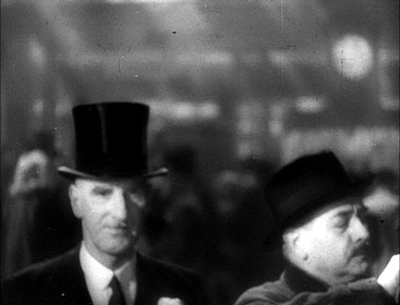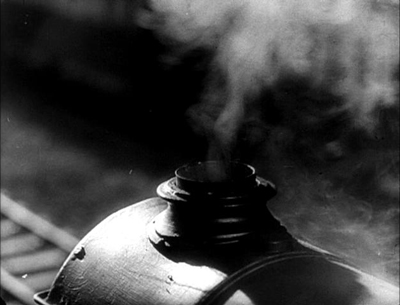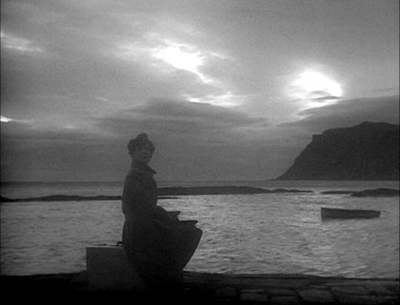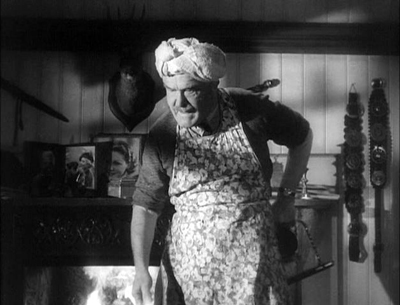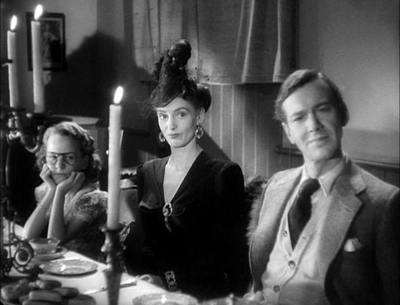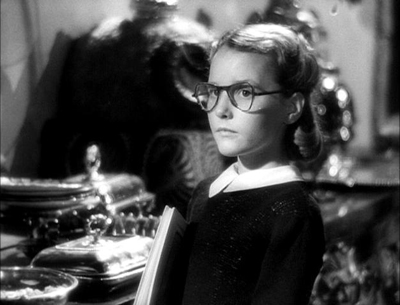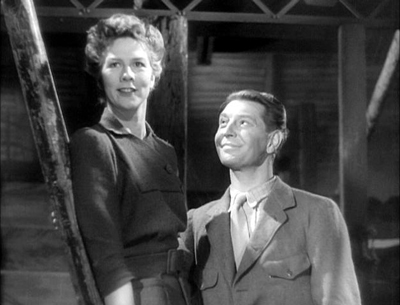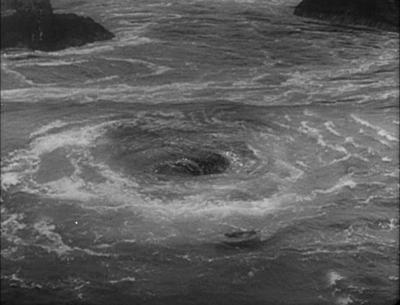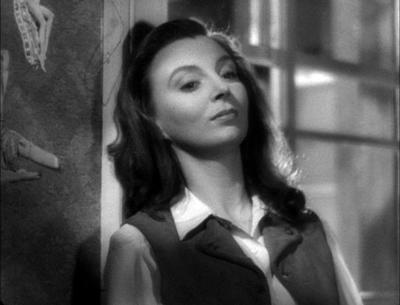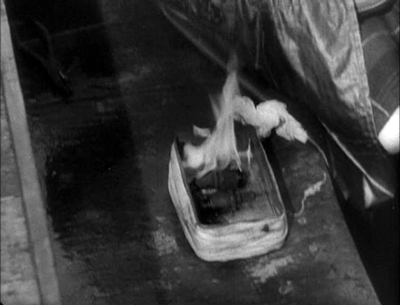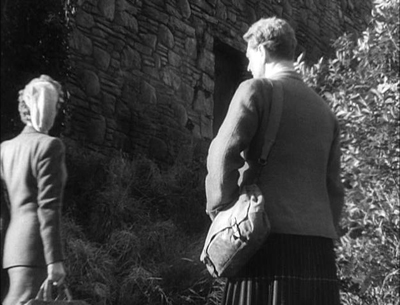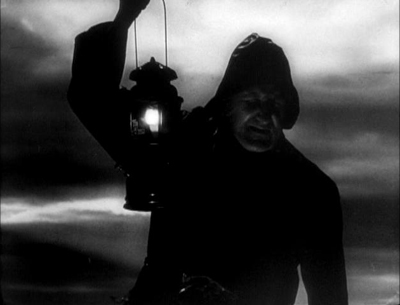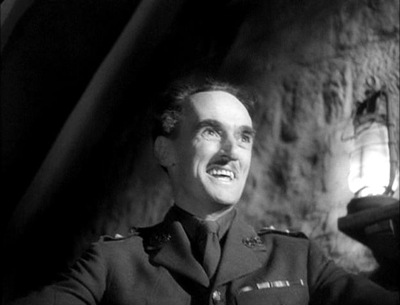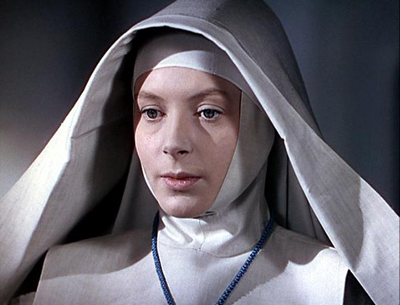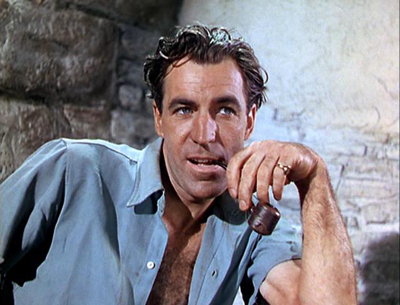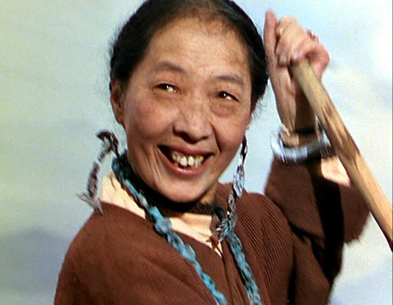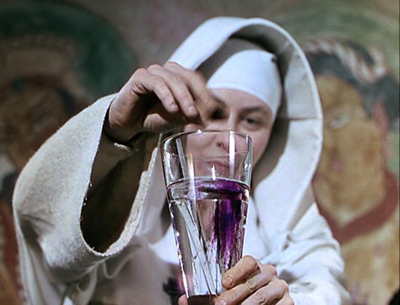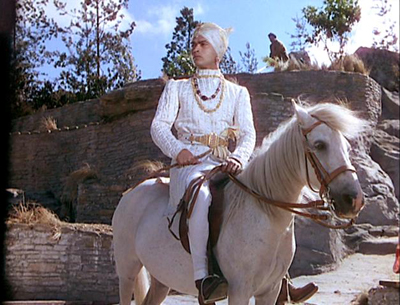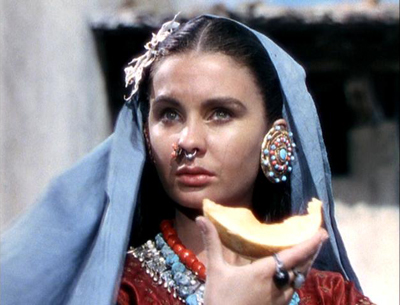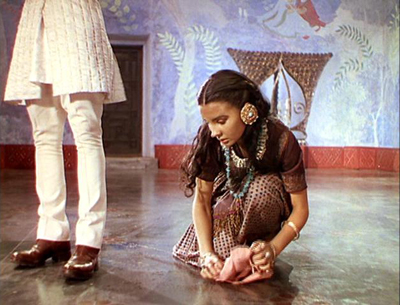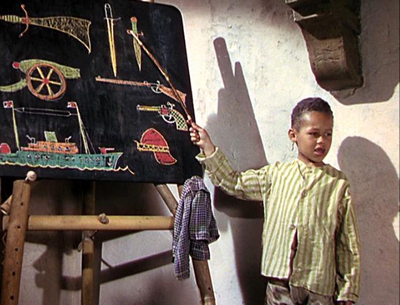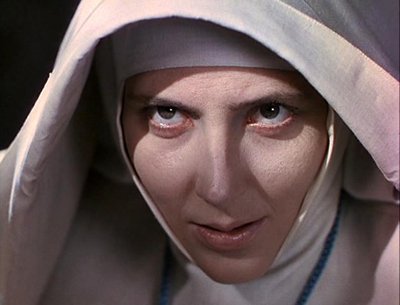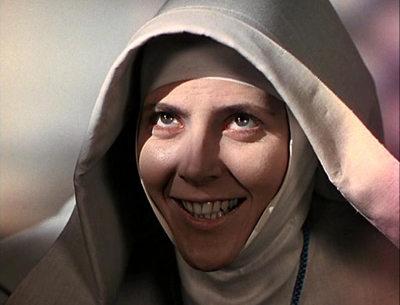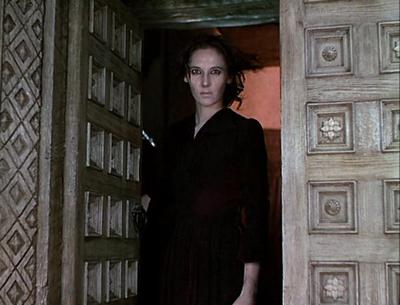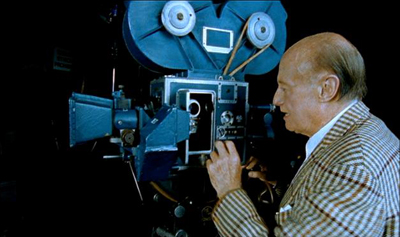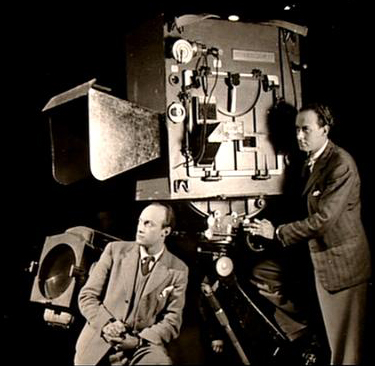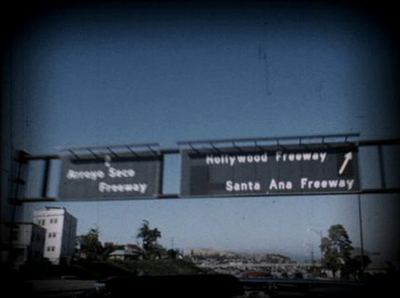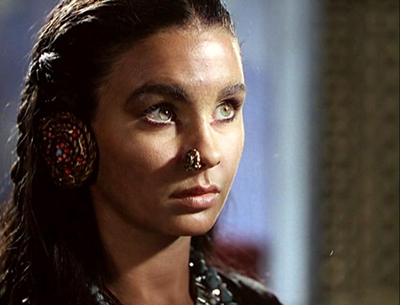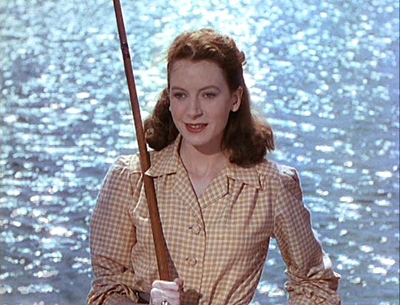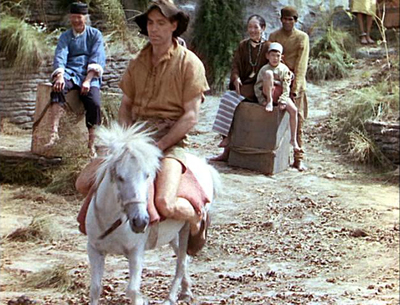All That Heaven Allows, 1955, directed by Douglas Sirk, screenplay by Peg Fenwick, from a short story by Edna L. Lee and Harry Lee.
After a couple of weeks in Hollywood, you realize that there's a definite hierarchy of film critics in this town, and there's only a very small A-list. Don't get me wrong: creative executives read second-tier critics—your Roger Eberts, your A. O. Scotts, even Armond White—but those are for water-cooler chat; they're not serious. There's only one school of criticism that really matters, that breaks down the relative merits of filmmaking in a concise and incisive way. I mean, of course, the people writing at Box Office Mojo. Who else is going to tell the hard truths: that Transformers 2: Revenge of the Fallen is ten times better than There Will Be Blood, and a staggering fifty-five times better than Vertigo? Like it or not, this city is run by people who believe in Worthington's Law: More Money = Better Than. And forget about the Hollywood golden age; it has always been this way, unless you think Al Christie and the Horsley brothers had unique artistic visions that they just had to see on screen. Sure they did; they had three unique artistic visions every week: one Western, one drama, and one comedy.
That's the lay of the land. But let's say you do have an artistic vision you want to see on the screen. Let's say you want to make movies that critique the patriarchy and consumerism. And as long as we're talking, let's say you're not independently wealthy, and so you're gonna need someone else to pay for it. How do you operate in a world where the economic realities of the film industry relentlessly push everything toward the middlebrow? The problem may seem intractable, but there's actually a very simple solution. You should move to New York and write a novel instead, because you can fucking forget about anyone out here risking a dime to tell people things they don't want to hear.
If you've gotta make a movie, though, there's one other option: work in a genre that studio executives don't pay too much attention to. Take that genre's conventions and turn them up to eleven, so no one can accuse you of not making the movie you're getting paid to make. Put so much bombast into your filmmaking that inattentive viewers won't pay attention to the underlying message, but clever viewers will hear what you want to say. Then you just wait fifteen years or so for Andrew Sarris to let everyone in on the joke.
It's an interesting strategy, and it's one several filmmakers have adopted over the years. The current world-record holder for subversive, poison-pill filmmaking is Paul Verhoeven, for Robocop and especially Starship Troopers, in which Verhoeven spent $100 million of Sony's money to more or less explicitly accuse Americans of being latent Nazis waging endless war against vaginas.1 Before Verhoeven, though, nobody did this better than Douglas Sirk.
Sirk had a background in European theater, but Stateside, he landed at Universal, a total schlock factory at the time.2 To all outward appearances, Sirk's movies fit right in with Universal's slate: they're certainly weepies, and you'll find all the tropes of the genre, from long-suffering women to men who fall in love for no discernable reason. But scratch the surface and you'll find that some of Sirk's premises would not be welcome on Lifetime. He made films in which children are monsters, women are marginalized, and even lives built outside of the shallow pleasures of consumerism can quickly sour into egotism and self-righteousness. He gets away with this because his films are so defiantly over-the-top in their repeated assertions that they're just schlock. This starts with the opening shot: a very famous backlot, with no attempt to hide the California hillside in the background.
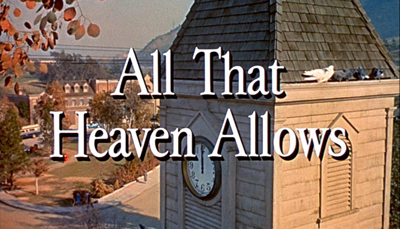
It's just a movie! Relax, studio executives!
All That Heaven Allows wouldn't be a weepie unless some woman or other was put through the meat grinder. In this case, it's a widow named Cary Scott, played by Jane Wyman:
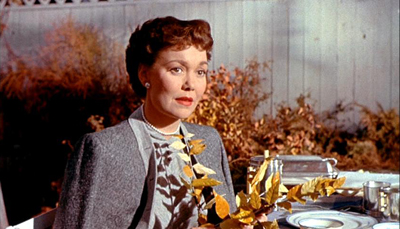
You can pretty much guess what the meat grinder is going to be from the name of her small New England town.

The town's ire is aroused by Cary's unwillingness to fade into the kind of death-in-life we reserve for middle-aged women. Interestingly, this includes her own children, who want her to marry an older gentleman named Harvey. Here's how her daughter, Kay, describes him:
He's pleasant, amusing... and he acts his age. If there's anything I can't stand, it's an old goat. As Freud says, when we reach a certain age, sex becomes incongruous... I think Harvey understands that.
Freud never said anything of the sort, but sex with Harvey does seem like it might be incongruous. He's played by silent movie star Conrad Nagel, looking like a skeleton.
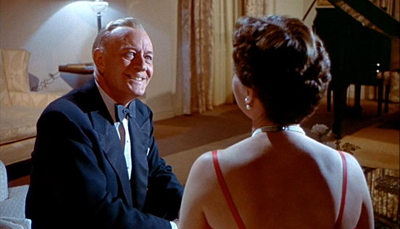
Harvey's at least twice as sterile as he looks; here's what he says to Cary right after proposing marriage.
Of course I realize I'm not very romantic or impetuous, but then you'd hardly want that sort of thing! I'm sure you feel as I do, that companionship and affection are the important things.
What a charmer. All things being equal, Cary prefers the company of her gardener, a Thoreau-reading, anti-consumerist nature lover named Ron Kirby.
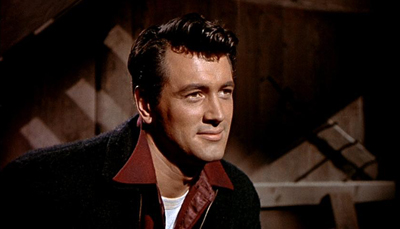
A woman of independent means dating a much younger gardener; as you can imagine, this goes over like a lead balloon. The leader of the torch-and-pitchfork brigade is a woman named Mona Plash, played by Jacqueline deWit. DeWit fully commits to this performance: she's over the top, but completely nails the mixture of faux-outrage and feigned innocence that is a gossip's stock in trade. Every second she's on screen could be a still photograph captioned, "Well, I never!"

She gets all the film's best lines; there's a scene where she runs into Cary's children, returning from school. Mona knows their mother is sleeping with the gardener; what's more, she knows her children don't know. So she says exactly the right thing:
Just wait until you see your mother. She's never looked so radiant! I wish I knew her secret...
About those children. It's a rare film indeed that portrays children as unrepentant, self-absorbed monsters.3 All That Heaven Allows is one of those films; Cary's children are doozies.
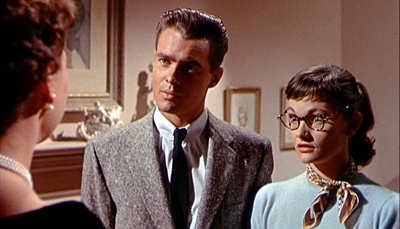
When she introduces them to Ron, who by this point has proposed marriage, they throw epic tantrums. Ned threatens to cut her out of the family completely, Kay bawls her eyes out (sample line, "I told him that I don't care what people said but Mama, I do care! I care terribly!"). When Cary finally caves to all the pressure and phones her son to tell him she's doing what he wanted, his response is for the ages:
Oh, great... Say, listen, I've got a class now, so goodbye, eh?
So far, I'm making this sound like camp: deliriously over-the-top camp, subversive camp, but camp, nonetheless. And it is camp; I don't want to downplay that. I haven't even touched on the most ridiculous scenes, like making Rock Hudson out to be a modern day St. Francis of Assisi:
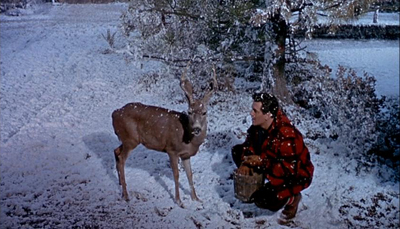
There's certainly nothing wrong with appreciating a film for camp value alone, but there's something more going on here. Thematically, All That Heaven Allows has a more uneasy relationship with American consumerism than most films of the period, and that's one of the things that led Sarris to write about him. But more importantly than that, Sirk approaches the tawdry pulp of his source material with the kind of visual discipline and precision one expects from Kubrick.
Some of Sirk's visual choices are the same kind of over-the-top subversion that I wrote about earlier, meant to fly under the radar and carry subtextual meaning. David Bordwell recently wrote about Sirk's use of unusually shaped furniture in Magnificent Obsession, and there's at least one example of this in All That Heaven Allows, in a scene where Ron shows Cary some seedlings he is growing. Ask yourself: why would Ron pick the tree up, to just that height?

I'll go on record and say I'm all in favor of that kind of visual joke. But more often than not, Sirk is using visuals to convey text, not subtext, and that's where he really excels. Take the way he shoots Rock Hudson and Jane Wyman in their scenes together: there are almost always strong vertical lines separating them.

During a scene where they're not getting along, Sirk uses anti-naturalistic lighting to take this separation to an extreme:
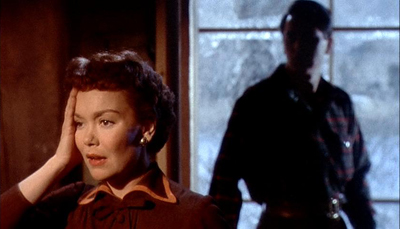
But it's almost always there, even when it isn't as noticeable:
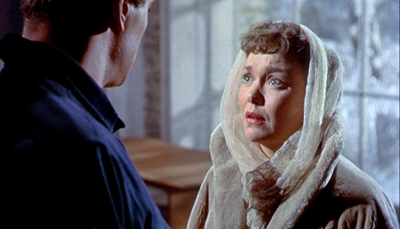
And look at the way Sirk uses the grid of the window panes in this sequence, which speaks for itself:



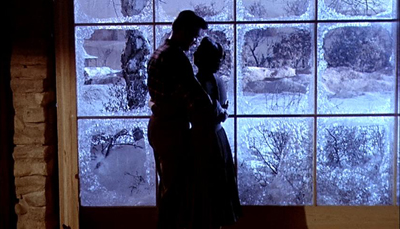
That first shot of the windowpanes is significant: in one of the film's first scenes, Kay tells her mother that she doesn't believe in the Egyptian custom of "walling up the widow alive in the funeral chambers of her dead husband." That's never mentioned again in the text, but in the visuals, Sirk keeps putting Cary in boxes like the one Ron forcibly enters in the sequence above. Here's another example, this time from a scene where her son tries to bully her into leaving Ron:

And when Cary is finally beaten into submission, we get a mirror image of the earlier scene with Ron:

That's all well and good, but the real reason Sirk hammers the viewer over the head with images of Cary trapped in little boxes comes near the end of the film, in one of the most thematically perfect shots in cinema. At this point in the film, Cary has called things off with Ron for her children's sake, and is looking forward to a nice holiday with her family around her. In rapid succession:
- Her daughter announces she is engaged and will be going away to live with her husband.
- Her son tells her he's gotten a job in Tehran.
- Since the kids are leaving, her son tells her he thinks they should sell the house and move her into something smaller.
- But not to worry: even though everyone in her life is deserting her, she won't be alone, because...
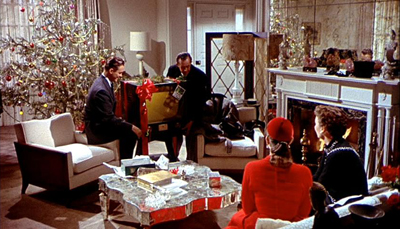
They've gotten her a Christmas present that will keep her company!
The TV salesman explains it like this:
All you have to do is turn that dial and you have all the company you want, right there on the screen. Drama, comedy... life's parade at your fingertips.
As he talks, cuts to a closer shot and tracks in toward the television:

And on the words "life's parade at your fingertips," the camera stops, showing us Cary, perfectly framed in the screen, looking back at us in horror from behind the glass.
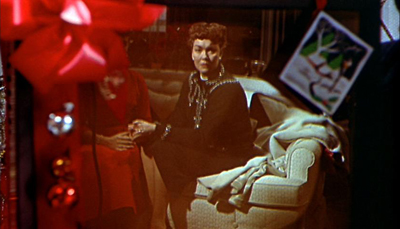
That's a perfect moment: Sirk unifies the visual and thematic elements that have been running throughout the film into a few seconds of screen time. Every other shot in the movie leads up to it. Note that this is not a moment where he's being particularly sly or sarcastic. And this is where Sirk and Verhoeven part ways: they both have some ironic detachment, but Sirk isn't entirely joking.4 Despite all the bombast and goofy melodrama All That Heaven Allows gives the audience moments where Cary Scott's suffering is raw and palpable, drawn from something real and sad and awful in our culture. Life's parade at your fingertips.
Randoms:
- The most unintentionally hilarious line in the film comes in a scene where Ron tells Cary about a friend of his who discovered "that he had to make his own decisions, that he had to be a man." Cary says, "And you want me to be a man?" and Ron replies, "Only in that one way." If only you knew, Cary Scott, if only you knew.
1And people went to see Starship Troopers, despite its message. Eat your hearts out, Pasolini and Lars Von Trier.
2Except for a disastrous foray in the thirties (which got the Laemmles ousted), Universal didn't start making higher budget pictures until the early sixties, when Lew Wasserman bought them and brought his clients with him.
3Parents are drawn as monsters all the time. And there's a subset of children's literature (aptly surveyed by Daniel Zalewski for The New Yorker) dedicated to the proposition that children are schizophrenic timebombs or even literal monsters. But in the stories adults tell each other, kids usually mean well.
4No one will ever accuse Verhoeven of giving a damn about the characters in Starship Troopers.





















